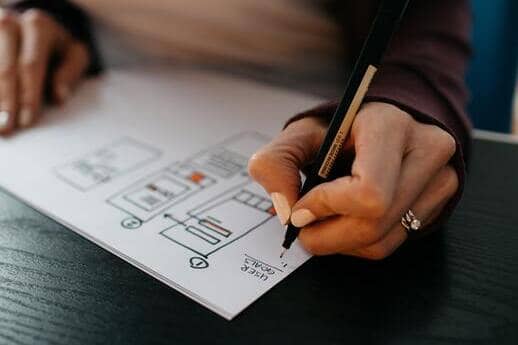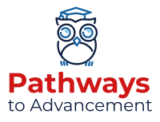Whether you’re just starting out in your UX/UI web designer career or you’re a seasoned professional looking to get a new job, chances are you’ll have to first land a job interview. Once you land a web designer interview, you’ll have to take the necessary steps to make sure you’re prepared.
What Skills Do You Need to Succeed as UI/UX Web Designer Applicant?
In order to be successful in a web designer role, you should have strong problem-solving, technical and creative skills. Generally speaking, the UI/UX professional is a web designer, but your role involves having a deep understanding of computer science, user psychology and creative storytelling skills.
The UX/UI designer must possess a thorough understanding of web technologies, graphic design and uses wireframing tools. You should have a good understanding of graphic design tools such as Illustrator, InVision, Fireworks and Photoshop. You should also be able to quickly adapt to new technologies and tools and must continuously update their industry knowledge and skills.
The UX/UI designer works closely with the client to understand goals and to explain user research results. He or she continually analyzes user activity and feedback to refine, enhance, and iterate the visitor’s experience.
UX and UI professionals must be both collaborative and self-directed. You should have excellent communication, as well as process and time management skills. In addition, the UX/UI designer should have top-notch organizational skills, creativity, attention to detail and passion for the role.
Preparing for Your Web Designer Interview
Your resume and portfolio are the most important parts in a web designer interview. They showcase your talents, achievements and knowledge of the field. The best way to prepare for a web designer interview is to create an extensive portfolio of your work, review the work that you’ve compiled and review any potential questions the company might ask you during the interview. For more insight into the job-related questions you might be asked, you should look over the job description and review the responsibilities and requirements.
Top Five Interview Questions for a Web Designer Job

1. What is UI and UX and why is it crucial to the application development process?
These user-focused design professionals are essential in the development of design interfaces that improve a user’s experience of software applications. For example, it’s used in desktop programs GUIs, mobile app frontends, and gaming interfaces.
The user-focused designer implements features that appeal to users and make it more useful.
You should be able to discuss and demonstrate your understanding of user research, usability and user interface. The interviewer is expecting you to demonstrate an understanding of user-focused design methods, current user research methods and the elements and principles of user experience and interface design.
2. What does your process include?
Each UX/UI designer approaches their process differently, and your answer should describe this process. Be prepared to provide project examples to illustrate these process steps.
The software project lifecycle starts with users’ needs and culminates in deployment. In order to successfully address this question, you should be able to explain your unique UX/UI process and how that has influenced past projects.
Here’s a sample answer of how a UX/UI web designer might address this question.
“I start with the user’s requirements and, when possible, interview users to understand their needs. The next step involves the creation of models to test with users before the implementation of the design.”
The answer above describes how a web designer addresses the users’ needs, followed with testing prior implementation.
3. How do you work with developers and other designers on a software project?
This will depend on the size of the project you’re working on. The UI/UX designer fills a certain role on the software project. For example, you may work within a team of UX/UI designers for a large project. Either way, you’re likely to interact with software developers, users, and product owners. The interviewer wants to assess your potential fit within the team structure. They want to make sure that you have the right communication skills and personality for the job.
For instance, you might say that you like to work in collaboration with others because we achieve better results.
4. UX/UI design involves and array of responsibilities. Which tasks do you consider the most important?
Similar to questions about your familiarity with specifics of the design process, this question is designed to evaluate what you consider to be most important when designing users’ work flows, building wireframes for the interface, gathering and using user research, documentation of user stories, and testing mock-ups/models with users before implementing the final design. You should be able to discuss some design process facets and their importance to achieving good results.
The interviewer will be looking to understand your prior experience as a UX/UI designer and how well you understand each part of the design process. They might also want to see how well your experience and background meets the needs of the existing team’s processes.
An example response to this question might be: “I know how important it is to document users’ needs, stories, and personas before I initiate the interface design. When possible, it’s also crucial to test these elements prior to creating the best possible design.”
5. How do you decide to add certain features and discard others for the final product?
Because many projects have tight deadlines and finite resources, you’ll need to be able to often rank the most and least important features. You should be able to discuss the concept of minimum viable product design (MVP) in your decision-making process. It’s also relevant to include the importance of consulting developers and product owners about technical limitations and strategies of the product.
The interviewer is looking for how well you’re able to articulate the evaluation of design choices, as well as your understanding of research principles and user requirements.
An example response to this question might be: “Many projects start with a longer list of requirements. The development and design process help us to decide which requirements are most important. It’s essential to discuss these decisions with product owners and users because I am not the ultimate decision-maker.”
Wrapping Up the UI/UX Designer Interview
Most people are not exactly sure what to expect during a web designer interview. They’re also not sure what to do when it is finished. What you do after each step during the interview process may be just as important as what you do during each interview. So, what should you do after your web designer interview?
- be sure to show a genuine interest in the position and company
- maintain professionalism
- send a thank you note (email) after each interview
By following these pre and post web designer interview tips, you should feel ready to go into that interview feeling confident and well-prepared.
